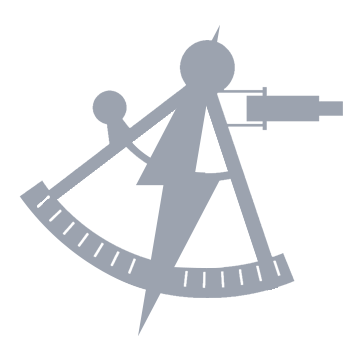Summary
Lieutenant Commander Paulo Costa is the executive officer aboard the starship Achilles. As bull-headed and reckless as he is charismatic and charming, Costa is, in many ways, the archetypical pilot. More often than not, his bravado is a facade to conceal his apprehensions about career advancement and his talents away from the helm; he wants desperately to command a starship, and on the Arcturus, he was surrounded by thousands of other officers with their own dreams of advancement, not to mention a dozen other lieutenants in the flight control department with similar resumes and identical ambitions. Costa will do anything it takes to stand out, which didn’t always endear him to Commodore Lancaster, a man who values conformity from his officers, but eventually won the recognition necessary for promotion.
Appearance
Tall at 1.85 meters and with a muscular 90-kilogram build, Lieutenant Costa strikes a dashing figure in either a flight suit or the standard duty uniform. He has pitch black hair and dark brown eyes with bronzed, olive-toned skin thanks to his combined Mexican, Italian, and Egyptian ancestry. Costa spends at least two hours in the ship’s gym every day, half on weight training and half on cardiovascular fitness, usually swimming—he was the top-ranked male swimmer in his class at Starfleet Academy and tries to maintain or improve his times despite no longer competing in that sport. More often than not, Costa is smiling—or at least smirking—and his charisma radiates as an infectious friendliness that can’t help put others at ease. Costa is an unapologetic show-off, and he will find any excuse to end up shirtless. Costa is almost always clean-shaven, but he can barely go 12 hours without significant stubble developing.
Personality
Most people would say that a little of Paulo Costa goes a long way, and few of his shipmates have a neutral opinion about him. Costa’s friends consider him to be the life of the party, while his detractors consider him to either be an “arrogant jackass” or a “mindless himbo.” (Or both, given that those are both appellations favored by his long-time frenemesis, Lieutenant Tristan Hawthorne.) Costa is both eager to please and eager to prove himself, which manifests as the type of energy one might get from a golden retriever—affectionate, guileless, and (perhaps) offten trying to jump into your lap. He is a master of flirtation (at least if he’s not dismissed out of hand for being too much of an “entitled jock bro,” to once again quote Lieutenant Hawthorne) and has a very active sex life, identifying as bisexual. His naturally outgoing personality also lends itself to performance, and he has acted in several amateur dramatic productions on Arcturus, ranging from Shakespeare, to Arthur Miller, to Broadway—though his barritone singing voice generally precludes him from leading roles in most musicals.
Costa’s stated, unambiguous goal is to become the captain of his own starship. At age 28, he has six years of active Starfleet service under his belt, and he hopes to move into a department head role aboard Arcturus or become the first officer of a smaller starship within the next eighteen months, to maintain a trajectory to assume a command by the time he turns thirty-three, a year older than Starfleet legend James T. Kirk was when he assumed command of the Enterprise, but the same age as Fleet Captain Lancaster was when he reached the rank of captain, but without an actual command. This is both because he thinks it would be arrogant to set any goal where the individual he’s comparing himself to is James T. Kirk, and because he considers Michael Lancaster to be both a professional role model—despite the fact that he also sees him as a tyranical martinet who hates joy, fun, and barrel rolls—and someone who he admires personally, not the least thanks to his enviable marriage to Luca Sheppard. Fellow mid-level officers aboard Arcturus have accused Costa of having a not-so-secret crush on the fleet captain as well, but he has repeatedly denied this.
Costa has a mild form of attention deficit/hyperactivity disorder (ADHD), which is managed both through counseling and through pharmaceutical means; his ability to focus plummets if he goes for more than a few days without his medication, which he takes orally in the mornings. He never has problems focusing while he is flying, but other high-stress, high-stimulation settings can cause him to struggle even when he does have his medication.
History
Childhood
Born Paulo Mateo Navarro Costa in Los Angeles on Earth just a few hours into New Year’s Day, just months before the opening of the Dominion War, Paulo was the son of Lieutenants Thiago Costa and Samuel Navarro, both assigned as engineers to Earth Spacedock at the time. He was conceived using artificial fertilization techniques allowing his two fathers to provide the genetic material for both the sperm and egg of a gamete that was implanted into his mother, Lieutenant Anne Habers. Habers’ wife, Lieutenant Hera Athenaios, was the surrogate for Paulo’s non-natal but genetic twin, Felix. Together, Habers and Athenaios participated in the upbringing of the two boys and are still considered to be their aunts—as they were eager to help their friends to have children but did not themselves wish to fully become parents. Paulo has one of his father’s surnames as a second middle name; this was decided by a coin flip, while his brother has it the other way around.
In 2375, Starfleet was so desperate to crew ships on the front lines that Samuel Navarro and Anne Habers were both transferred to recently-built ships; owing to the complex family situation involved, Starfleet kept Thiago Costa and Hera Athenaios on Earth with their very young children. While both Navarro and Habers had several close calls, the war ended that same year and they were able to return home, all before either Paulo or Felix were capable of understanding what was going on.
Throughout Paulo and Felix’s early life, their fathers continued to serve on Earth Spacedock repairing, building, and maintaining starships. The two children were given regular trips up to the massive station. Before they entered grade school, they even took a trip to the Starfleet Museum’s orbital facility over Athan Prime. This engrained in Paulo a deep fascination with space, starships, and Starfleet—a fascination that his brother never shared, at least not to the same degree.
Growing up on Earth meant access to the best schooling system (for Humans) in the Federation, as well as wide, open spaces. As soon as Paulo entered grade school, he thrived in an environment where there were constantly new friends to meet and new sports to try out. Felix was much more shy, though he excelled in the academic aspects of his schooling. As early as the fifth grade, Paulo had voiced a desire to one day join Starfleet. His fathers supported this ambition, though they were very clear with him that his grades would need to match his enthusiasm if he stood a chance of entering the Academy.
As Paulo was transitioning from grade school to middle school, he was diagnosed with a mild form of attention-deficit/hyperactivity disorder (ADHD) and received both psychological and psychiatric treatment to help him focus his mind. (And he continues to be treated as an adult.) Learning this about himself helped Paulo to translate his extreme energy into productive channels, and he received perfect grades throughout middle and high school with the singular goal of becoming a Starfleet officer. Along the way, he continued to excel in sports—particularly swimming—and developed interests in music and theater, which were early examples of his tendencies to chase his endorphins down rabbit holes for hobbies.
Paulo applied for and was accepted to the Starfleet Academy Preparatory Program (SAPP) during his junior year in high school. This extensive training regimen prepared him over the next year for a successful application to Starfleet Academy itself. His brother Felix decided to pursue an academic career at the University of Chicago, meaning that the two of them would be separated for the first time in their lives.
Starfleet Academy

As a cadet, Costa entered Starfleet Academy in 2391. Within twenty-four hours of stepping foot on campus, he declared a major in astronautics, knowing that flying starships was where he belonged. Having studied various famous officers’ records, including Christopher Pike and Jean-Luc Picard, he also knew that becoming a pilot was not only a direct path into the command division, but a surefire way of becoming not just a Starfleet officer, but a Starfleet captain. Having completed his goal of joining Starfleet, he already had his eyes set on something more: a ship of his own.
Costa was popular at the Academy, and many of his personality traits were praised by his instructors as being those of a leader—though he was also noted as being reckless and often difficult to manage, thanks to his energetic personality. He excelled in physical training, particular in survival settings, but he had to apply all of his brainpower to even pass the more advanced science classes that were expected of him. Within astronautics, he was seen as a natural and intuitive pilot, but it took intensive study for him to become comfortable with the theoretical underpinnings of starship manuevering.
During his first two years at Starfleet Academy, Costa was allowed nowhere near actual spacecraft, practicing only on the holodeck. Between his sophomore and junior years during hands-on training sessions, he was able to take up Sparrow-class flight trainers on runs both within Earth’s atmosphere and at the training range orbiting Jupiter. During this period, he was selected to join the Fourth Fleet’s elite training cadre at the Mellstoxx III campus, and thus joined Cadet Squadron Bravo in 2393. While he was reluctant to take a transfer out of the Sol system and away from his family, the Fourth Fleet’s reputation was superb.
In his early days at the Academy, Costa had suffered without his twin brother around and had spent many hours talking with him through video and holo calls which continued throughout his career there. At Mellstoxx, though, there was restricted bandwidth for cadets (as the Academy wished for them to focus on their studies) and so he was able to speak to him less and less often. While this was challenigng at first, it did help him become a more independent person and he developed several long-lasting friendships.
He also met Cadet Tristan Hawthorne, who had been with him all along on Earth, but with whom Costa had not crossed paths. Like Costa, Hawthorne was a member of Cadet Squadron Bravo, though studying science. With perfect, tawny hair, deep blue eyes, and patrician cheekbones, Costa was smitten with his fellow cadet for about five seconds before he came to think of him as perhaps the most stuck-up, insufferable Human that he’d ever met thanks to Hawthorne pointing out Costa’s un-shined shoes to their squadron commander. It earned them both punitive exercise—laps around the parade ground—Costa for a sloppy appearance and Hawthorne for not supporting his squadronmate. The two of them remained on poor terms, though they would seemingly always be posted on assignments together. Their bickering drove Costa to try to perform better. Indeed, becoming a captain was even more attractive to Costa because it meant that he would finally be able to take Hawthorne down a peg.
Costa (and Hawthorne) served out their midshipmen cruises aboard the Academy’s training ship, Exeter, where Costa was given the honor of being the cadet chief flight control officer for the cruise. He (and Hawthorne) graduated in the top 10% of their Academy class and were promoted to Ensign in 2395.
USS Arcturus (2395-2397)
After a few months as a deck officer aboard Starbase Bravo, usually serving as a gopher for various department heads, Costa was assigned as a relief flight control officer aboard the Ambassador-class exploratory cruiser Arcturus, in a crew rotation that included many of his classmates. This venerable old vessel was in the last few years of her service life, but Costa relished the chance to sit at a helm that required significantly more manual attention than more modern vessels. He would routinely trade shifts with other ensigns so that he could be on-call as often as possible. Costa also frequently volunteered for shuttle missions and general away duty out of a desire to ingratiate himself on his superiors.
For Costa’s first shuttle mission, he was assigned to transport a cylinder of terraforming emulsion to Starbase Bravo, after it was discovered in a cache belonging to the same race that built the ancient generation ship recovered by the starships Cerritos and Merced in 2380. Unfortunately for him, protocol required that a science officer accompany any such cargo to ensure the integrity of its container, and the science officer selected for this role was now-Ensign Tristan Hawthorne. It was a five-day trip for their old Type-7 shuttlecraft, which they spent largely in stony silence.
A day away from the station while on the outskirts of the Paulson Nebula, the shuttle was hit by a glancing blow from the outer edge of an ion storm and the cargo container was breached, despite both the primary and secondary power supplies remaining intact. Despite losing many of the flight controls, Costa was able to stabilize the shuttle with reaction control thrusters long enough for Hawthorne to seal the aft compartment and flood it with their emergency supply of parizene gas and activate a low level radiation field to prevent the terraforming emulsion from transforming their shuttle. From there, it took several hours for them to make enough repairs to the shuttle to continue on to Starbase Bravo, but they made it in one piece and the terraforming emulsion had been salvaged.

They were sent back to Arcturus in a brand-new shuttle, once their cargo was delivered, so that Starfleet could shuttle the craft itself as well as the terraforming emulsion. When they returned, second officer Larus Alesser had been delegated to handle their debriefing. While they had a brief, begrudging respect for one another’s talents aboard the shuttle, Costa and Hawthorne immediately began pointing the finger at one another for the incident, despite it being beyond both of their controls. Both young officers recieved commendations for their actions which resulted in no loss of life, as well as notes on their dossiers to improve their collegiality going forward. Neither man took that to mean that they were ordered to be friends, though, and from that point onwards had almost nothing to do with one another aboard the Arcturus.
Costa served aboard Arcturus until 2397 when she was decomissioned to make way for the new Odyssey-class USS Arcturus which was already under construction.
USS Opportunity (2397-2399)
By 2397, Commodore Elizabeth Hayden had already been selected to command the new Arcturus and lead her squadron to the Delta Quadrant, though she was still in command of the Obena-class explorer Opportunity. A significant portion of the old Arcturus‘s crew was transferred to the Opportunity, so that Hayden could assemble the crew she would eventually take with her to her new command. Costa joined Opportunity as a lieutenant junior grade and as the designated flight control officer for gamma shift. While he would have preferred a shift that saw a little more action, he was thrilled to have a regular posting behind the helm of a starship.
In addition to the promotion in both rank and station, the Opportunity’s captain was a legendary officer in her own right, and her first officer, Commander Michael Lancaster, had experienced a meteoric rise to first officer aboard a major starship by just 30. While Costa hoped to beat that record by at least a few years, he studied the first officer closely and hoped to impress him, knowing that he was a likely candidate either to succeed Hayden on the Opportunity or join the mission to the Delta Quadrant, so either way his opinion would have a lot of weight on Costa’s future career.
Costa managed to catch Lancaster’s attention by manually recalibrating the torque sensors at the helm to a level of precision .008% better than the automated maintenance routines were capable of. As a reward, he was given his first command: a survey mission to one of the minor islands of an O-class moon orbiting Zeta Asteropes III, a gas giant being evaluated as the location for a potential colonization or as the site of a research complex. As fortune (or misfortune) would have it, Lieutenant Junior Grade Tristan Hawthorne was assigned as the lead science officer on that same mission.

Because of the radiation fields created by the gas giant, the survey team used a shuttle to travel from the Opportunity to the surface of the moon. While finding nothing remarkable in terms of life on the surface, they did discover a cave system near the center of the small island they were sent to survey, where Hawthorne found signs of potential sentient life in the form of latent organic readings. Eager to add a discovery to his dossier, even if it also did the same for Hawthorne, Costa charged into the cave system without ordering a full seismological assessment or contacting the bridge over Hawthorne’s strenuous objections.
While they were arguing, Hawthorne and Costa slipped down a passageway that neither of them had seen, which was essentially a 50-meter chute down into the bowels of the planet. They would have likely broken every bone in their bodies had there not been a soft cushion of luminescent fungus waiting for them. This fungus turned out to be the so-called sentient life that Hawthorne had been looking for, which had many complex compounds in its cellular makeup but was still just fungus.
Costa and Hawthorne had to result to using their hand phasers to cut steps into the chute to climb back to the surface, as local minerals and the ambient radiation in the atmosphere continued to limit transporter functions. When they got back up to the beach, they found an entire security team headed by Commander Lancaster getting ready to go look for them.
“Careless” and “foolish” were the nicest words among the litany that Lancaster unleashed upon the two lieutenants to describe their performance. This moment was the first time that Costa or Hawthorne attempted to take blame rather than push it off on one another, as Costa argued that it had been his eagerness that got them into trouble, while Hawthorne was apologizing for his own mistake of confusing a fungus for sentient life. That tactic, it turned out, was not useful as Lancaster was quick to agree that they were both at fault. That interaction was Costa’s only chance to get into Lancaster’s good graces before he left the Opportunity to take up a captaincy at Starfleet Headquarters, and Costa considers it to be one of his lowest professional moments in Starfleet.
After that, Costa worked even harder to demonstrate to Commodore Hayden that he was cut out for bigger and better things, routinely earning the top marks on fitness tests and flight recertification drills. While it was several months before he was considered for away team duty again, he did eventually begin accompanying some senior staff away teams when extra hands (with red shirts) were needed. That initial lapse of judgment aside, Costa’s reputation was pristine by the time Hayden was ready to assume command of the Arcturus in 2399.
USS Arcturus (2399-Present)
To Costa’s shock, he learned that it was actually still Captain Lancaster who was doing a majority of the crew selections for the new Arcturus, but Lancaster had not only selected him as Assistant Chief Flight Control Officer but had approved his promotion to full lieutenant. Costa joined the crew of the Arcturus in early 2399, just before the ship’s formal launch.
For the next two years, Costa would be a regular figure on the bridge and flying runabouts for both Commodore Hayden’s brief tenure as captain and then under Captain Lancaster when he assumed permanent command.
Service Record
| Date | Position | Posting | Rank |
|---|---|---|---|
| 2391 - 2393 | Astronautics Student | Starfleet Academy, San Francisco |
 Cadet Cadet |
| 2393 - 2395 | Astronautics Student | Starfleet Academy, Mellstoxx III |
 Cadet Cadet |
| 2395 - 2397 | Relief Flight Control Officer |
USS Arcturus (NCC-49801) Ambassador-class exploratory cruiser |
 Ensign Ensign |
| 2397 - 2399 | Gamma Shift Flight Control Officer |
USS Opportunity (NCC-83012) Obena-class explorer</small< |
 Lieutenant Junior Grade Lieutenant Junior Grade |
| 2399 - 2401 | Assistant Chief Flight Control Officer |
USS Arcturus (NCC-84000) Odyssey-class heavy explorer |
 Lieutenant Lieutenant |
| 2401 - Present | Executive Officer |
USS Arondight (NCC-86407) Reliant-class frigate |
 Lieutenant Commander Lieutenant Commander |

 Bravo Fleet
Bravo Fleet






